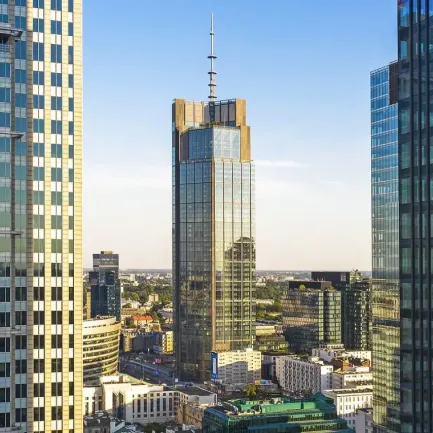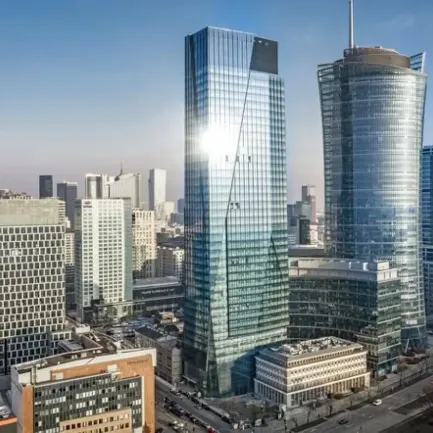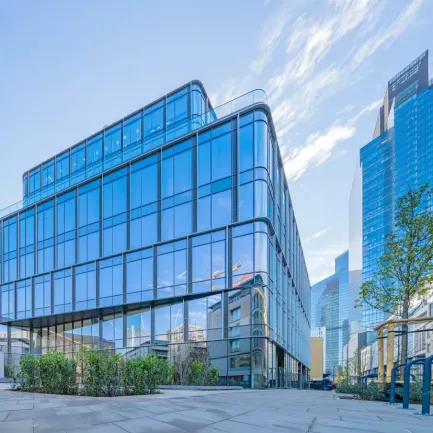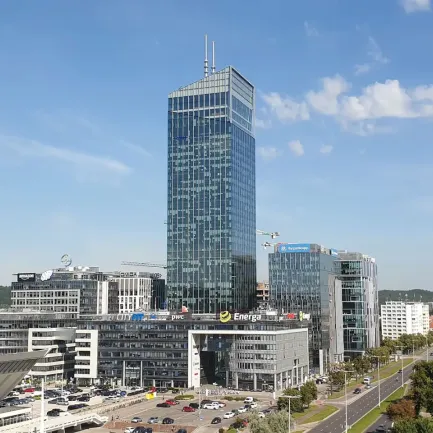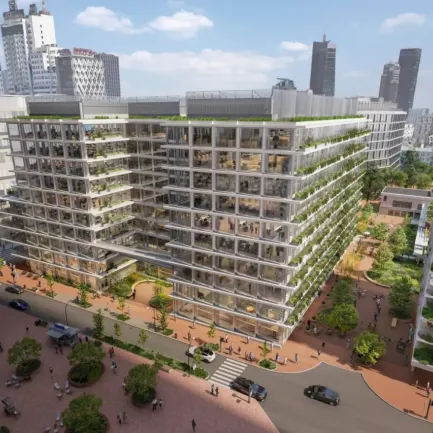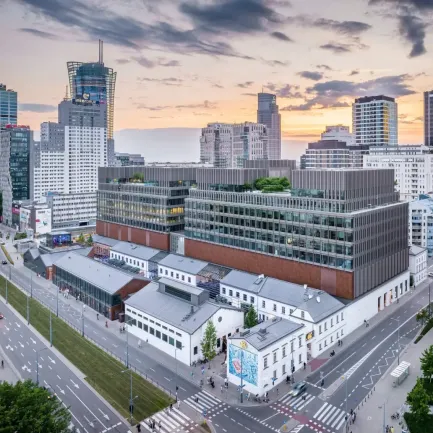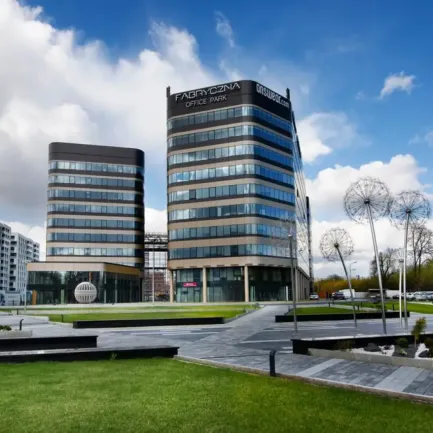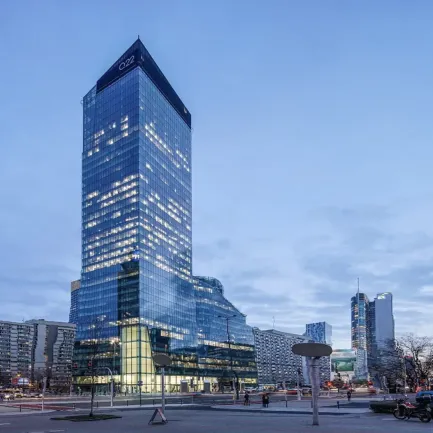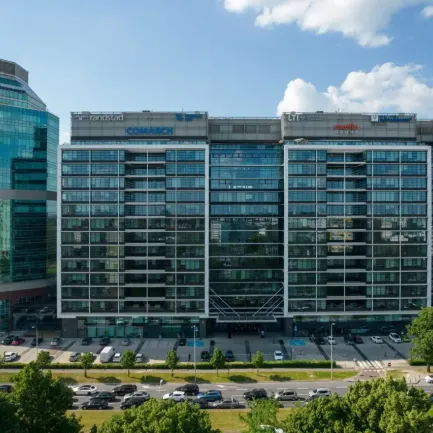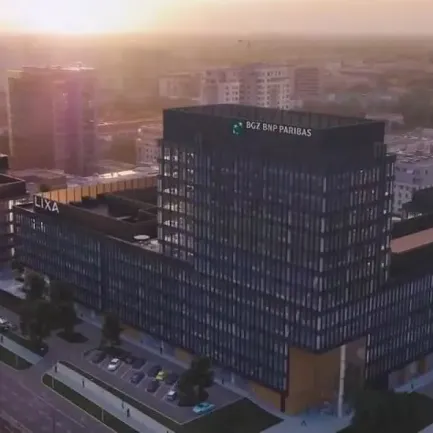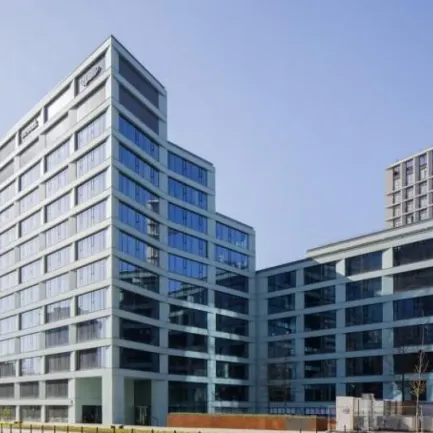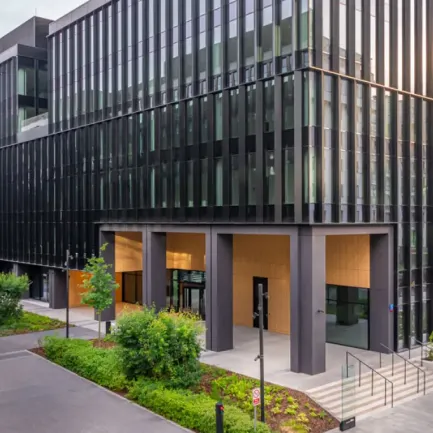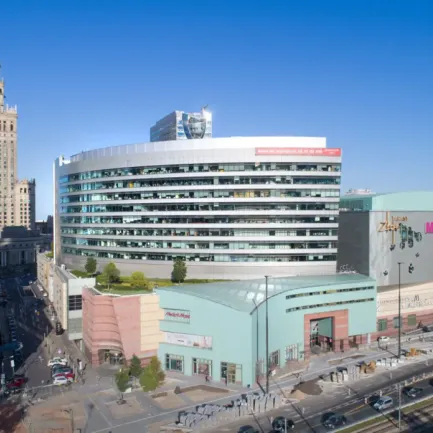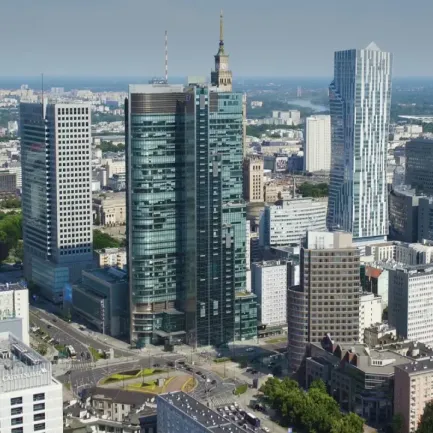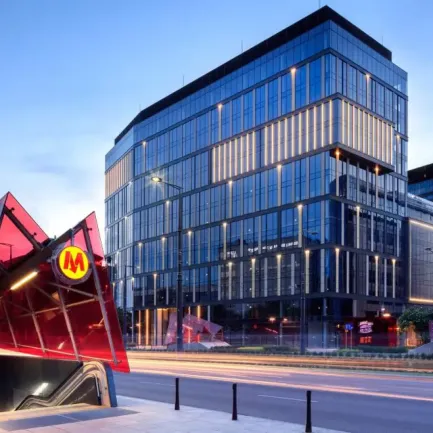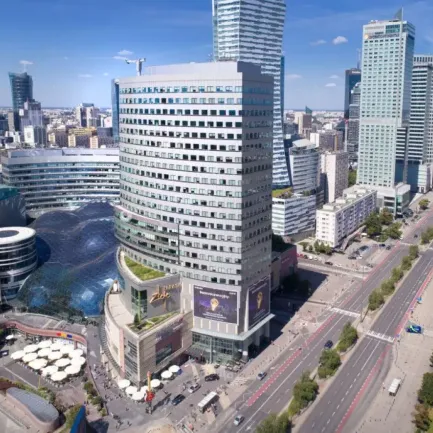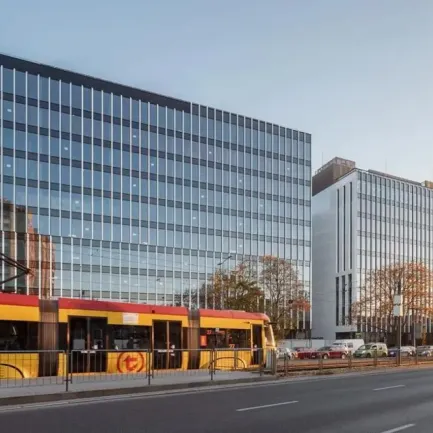Despite slower growth in new office supply in southern Poland, demand is on the rise. Kraków and Wrocław are solidifying their leading positions, while Katowice is consistently building its brand. Together, they make up a region that continues to attract international business, says Tomasz Chojnacki, Regional Director, Office Department, Newmark Polska.
At Newmark Polska, you are responsible for office tenant services across southern Poland. Is this an attempt to redefine this market?
Tomasz Chojnacki, Newmark Polska: Indeed, we want to look at the regional office markets of Kraków, Wrocław and the Katowice agglomeration in a broader context, viewing them as a single, integrated system. This is how tenants have seen them for several years – especially global corporations starting or planning to launch operations in our country. I have been advising tenants in this market for over a decade and have often been involved in processes where companies were considering opening an office in one of the three cities, forcing them to compete with one another.
Wrocław, Kraków and the Katowice agglomeration share the A4 motorway and proximity to the German border. Each location has its own large airport – a major advantage for companies operating internationally. At the same time, these cities are quite different and none serves as a satellite of the others. Their potential lies in synergy and – equally important – the combined office stock of Wrocław, Krakow and Katowice represents more than 60% of Warsaw’s stock.
Those are the advantages. What challenges is the southern region up against?
Just a few years ago, these markets were experiencing extraordinary momentum. Recently, however, new supply has slowed significantly across all regional cities, and some locations have even seen a decline. This is confirmed, for instance, by data for the first half of the year – none of these markets recorded any new completions.
This does not mean, however, that these cities have lost their significance permanently. Demand for offices in Kraków and Wrocław continues to grow. Only Katowice is experiencing a decline, reflecting a different phase of growth in that market, which is still developing and maturing. The number of transactions in the city is relatively low, so even one project can significantly skew the statistics. Despite this, Katowice remains a major player in the region.
Wrocław and Katowice have seen their office stock shrink as some buildings were repurposed. Are these isolated cases, or do they suggest a broader trend?
The pandemic has clearly reshaped the office market, and owners now face the challenge of adapting their buildings to tenants’ new expectations. To bring employees back to the office, companies are most often targeting modern, mixed-use buildings that offer not only office space but F&B outlets, fitness facilities, leisure areas and conference rooms. As a result, older properties that don’t meet these requirements often need to be upgraded – or sometimes repurposed. The impact of these decisions is already filtering through to the market, but I don’t think this will happen on a massive scale.
This trend is especially strong in Wrocław, isn’t it?
Wrocław has long led the field in new supply, but right now its office development pipeline is at a historic low. While the slowdown in construction has affected all regional cities, the capital of Lower Silesia is also seeing several large buildings repurposed, which has pushed its overall office stock down. Schemes such as Sky Tower (part of its space), Wratislavia Tower, and Renaissance Business Centre have been converted into residential or hotel buildings.
At the moment, only two office projects are underway in Wrocław: Swobodna SPOT I (14,500 sqm) and The Park Wrocław 2 (9,500 sqm). That’s a stark contrast to the record pipeline of more than 300,000 sqm in the third quarter of 2017. But today Wrocław is a different office market – more mature and growing at a naturally slower pace. Importantly, demand rebounded a few months ago. That means that new supply will also recover, although probably not on the same scale as a decade ago.
We are also seeing lower supply levels in Kraków. Despite that, office take-up in the city has hit a record high. What is attracting tenants to the capital of Małopolska?
Today, Kraków is the strongest regional office market in Poland, with demand that is remarkably stable and robust. Despite constrained supply, companies continue to renew leases – renegotiations made up as much as 71 per cent of all transactions in the first half of the year. Tenants are opting to renegotiate partly due to the scarcity of prime office units above 5,000 sqm and partly in order to optimise costs, both in terms of fixed office overheads and potential fit-out for new space. Companies choose to stay on in Kraków not only because of its strength as a business hub, but also thanks to its large pool of high-skilled labour. As a result, the vacancy rate has been edging down since the start of the year, reducing office availability. As in Wrocław, growing demand in Kraków is also expected to trigger a rebound in new supply in the coming years.
As for the take-up structure, it looks quite different in Katowice, the capital of Upper Silesia. New leases account for 71 per cent – the highest share in Poland. At the same time, Katowice is recording the country’s highest vacancy rate.
Each of these markets has its own dynamics and faces different challenges. For Katowice, a key challenge is the high proportion of vacant offices; however, with an upswing and effective space absorption, there is a chance that the market will stabilise gradually. On the supply side, what sets Katowice apart is the growing activity of local developers delivering smaller projects for long-term retention in their portfolios. With their own sources of financing, they can decide when to start new projects, regardless of the current interest of investment funds in office assets in the region.
Competitive rents, standing at EUR 13–16 per sqm in prime office buildings, are a clear draw for the Katowice market. Another advantage is the large labour pool across the agglomeration, which is home to over two million people, including plenty of graduates with diverse skills.
How have the profiles of tenants and their expectations for office space changed in the cities of southern Poland in recent years?
Southern Poland remains dominated by shared services and IT, but the latter sector has become significantly more diverse. Alongside traditional operational centres, we are also seeing enquiries from companies focused on artificial intelligence, cybersecurity and data centres. The key change, however, is in work patterns: fewer square metres are being allocated per desk, while more space is being dedicated to collaborative areas.
Additionally, the model of one large office hub for headquarters, combined with smaller satellite offices in serviced or flex spaces, is growing in popularity. It offers companies a lot of flexibility, supporting hybrid work, making it easier to hold client meetings or project sessions, and allowing them to expand or downsize their office footprints as needed. Kraków and Wrocław already boast a wide selection of serviced offices, while Katowice is steadily growing its stock.
When advising our clients, we are increasingly placing emphasis on the quality of offices and the available options to adapt spaces to new work models. Tenants aren’t just after square footage – they’re seeking value in the form of modern, functional and well-designed spaces that foster cooperation and creativity. Today, this is a key trend in the region and one of the most forward-looking strategies for tenants.
Given the muted developer activity and uncertainty around new projects, what is your outlook for the office market in southern Poland?
We are already seeing demand pick up steadily, especially in Kraków and Wrocław. This shows that the southern office hubs remain attractive to companies and investors. A shortage of quality office space, however, is imminent, and supply will become the key focus. Some projects currently on hold are likely to be relaunched because the market doesn’t like a vacuum. Additionally, we can expect upgrades to older office buildings, which will once again become attractive and help partially close the supply gap.
It usually takes at least three years to prepare new projects for development, which calls for advance planning. During this time, advisors play a key role in the office market, helping tenants evaluate a project’s potential and make optimal use of available supply. I am confident that the southern market will remain one of Poland’s key investment regions and will continue to strengthen its role in attracting international companies. This location – despite its challenges – demonstrates resilience and readiness for further growth.


